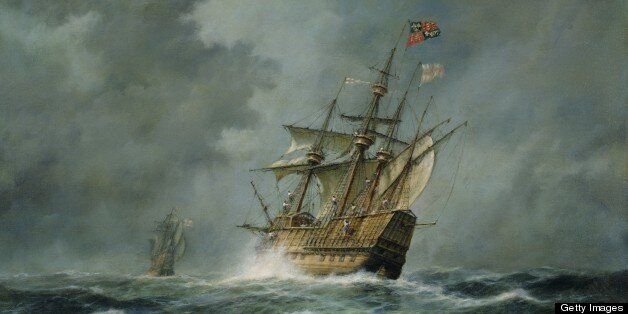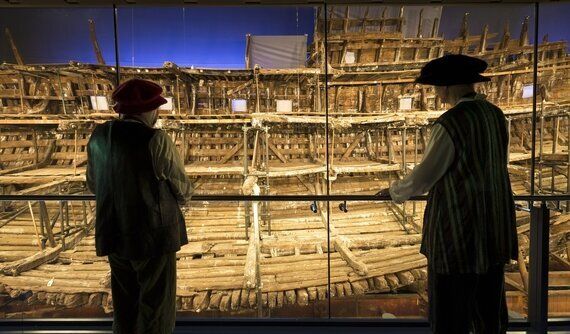
Stories are everything these days. The proliferation of social media has allowed everybody to share their lives, telling stories from trivial things like their daily routine to how world events have impacted their lives. It used to be a cliché that everybody has a story to tell. We're living in the time that proves it.
Recently, I was thinking about how, with most archaeological artefacts, the story is based on its history; people go to the British Museum to look at these old items, not to find out the story behind how they got there. Our neighbour HMS Victory is over 200 years old, but to most people, she went from the Battle of Trafalgar to her current dry dock without anything interesting happening in between (which isn't true, as the curatorial team over there will gladly tell you).
This, however, is certainly not the case with the Mary Rose. In fact, it's possible that the story of her recovery has overshadowed the actual history of the ship between 1510 and 1545. When you look into it, it feels like everything that happens with the Mary Rose has a story, and not just an amusing anecdote, but a huge epic with a cast of thousands.

Image credit: Chris Ison for The Mary Rose Trust
Of course, the Mary Rose has her life story; the 34 years she served in Henry VIII's fleet, escorting Henry VIII to the Field of the Cloth of Gold, taking troops to Scotland for the Battle of Flodden, attacking the French fleet at Brest and destroying the town of Morlaix are all interesting stories in themselves. There are other, smaller stories too, such as the race around the coast of Kent, the dinner with the Holy Roman Emperor and the time four Mary Rose sailors got drunk and raided a Portuguese merchant vessel docked in Greenwich.
These are just the historical stories, there are a number of works of fiction based around the Mary Rose, the most popular being Heartstone, part of the Shardlake series by C J Samson, which makes the sinking a major plot point.
The sinking of the Mary Rose is a story in itself. The fact we don't really know what happened, and why she sank, has given her a certain mystique and allowed many people to let their imagination go wild. Explanations stretch from shoddy workmanship to the crew being frightened by a Spanish ghost captain. There's also the belief she sank on her maiden voyage, which despite our best efforts, isn't going away.
Nearly two centuries later, the ship was rediscovered by the Deane Brothers, pioneers of underwater breathing apparatus, who recovered a number of items from the Mary Rose, some of which have ended up in museums, some of which were turned into souvenirs. (Heritage sites were treated very differently back then; we see a time capsule, they saw a treasure chest!)
Of course, the most commonly known story is that of the rediscovery and the raising. The Mary Rose is probably unusual amongst archaeological finds regarding how well known the story of her recovery is, with probably only the rediscovery of the Tomb of Tutankhamun being as well documented.
There are few museums, outside of small ones based on private collections, dedicated to individuals or where they have had whole collection donated, which give a whole gallery to the stories of the people who found them, outside of the big names like Howard Carter, Mary Anning or Lord Elgin.
Finally, there's the work after the Mary Rose was lifted, over thirty years of conservation. Who doesn't have a memory of the Mary Rose, either from watching her being raised, to visiting her in one of her many stages of conservation. While the details might be blurry for some, vague recollections of getting wet from the sprays, listening to an audio guide in a corridor while looking through misty windows, we all have our own Mary Rose stories. These add to the vast collection that began in 1510 when a king ordered a ship to defend his realm, probably never thinking that over 500 years later people would still be talking about her.
